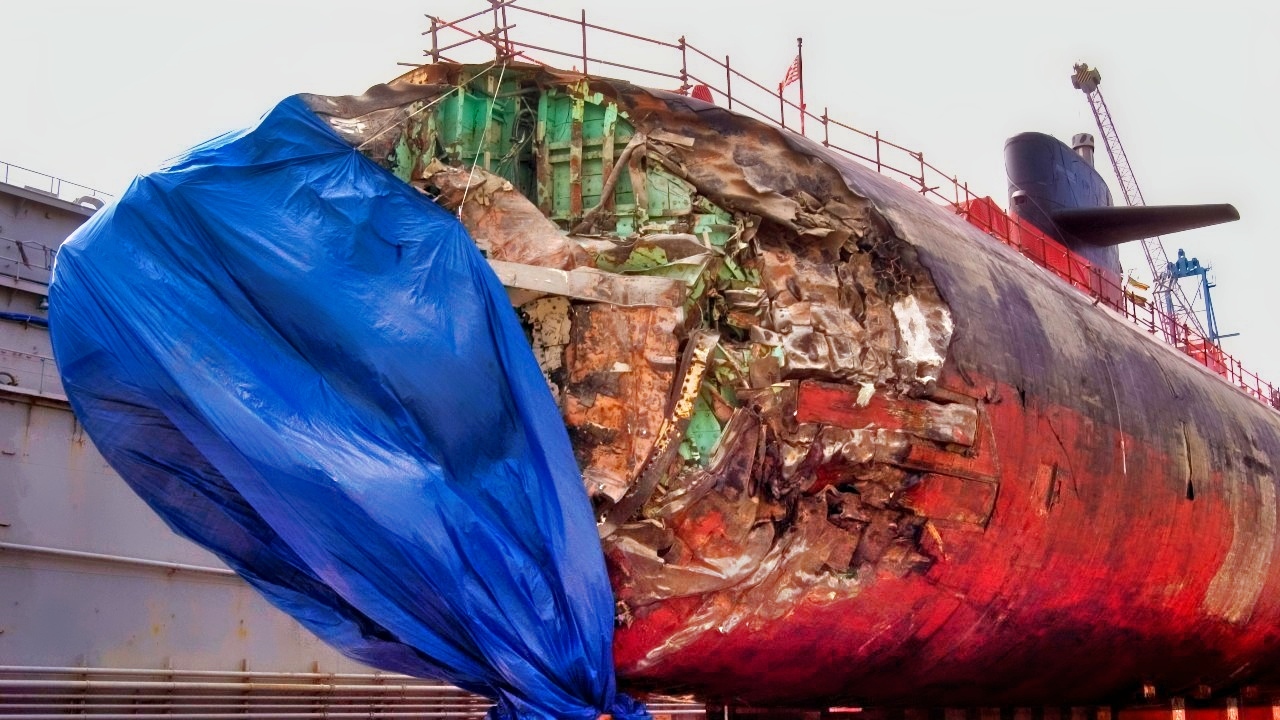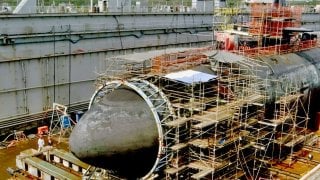How Tough are U.S. Navy Submarines? They Hit 'Underwater Mountains' and Survive
In January 2005, the USS San Francisco, a Los Angeles-class nuclear submarine, collided with an uncharted undersea mountain near Guam. Traveling at over 30 knots and 525 feet deep, the impact caused significant structural damage, including to the forward ballast tanks and sonar dome.
What You Need to Know: In January 2005, the USS San Francisco, a Los Angeles-class nuclear submarine, collided with an uncharted undersea mountain near Guam. Traveling at over 30 knots and 525 feet deep, the impact caused significant structural damage, including to the forward ballast tanks and sonar dome.

-Despite the collision, the submarine’s pressure hull and nuclear reactor remained intact, thanks to the U.S. Navy’s SUBSAFE program.
-One crew member was killed, and 98 others were injured, but the San Francisco surfaced and returned to port. After extensive repairs, it returned to service in 2008, sailing until its decommissioning in 2017.
USS San Francisco Crash: Lessons from the 2005 Undersea Mountain Collision
In 2005, the USS San Francisco nuclear submarine ran into the side of an undersea mountain. The impact resulted in significant structural damage to the submarine’s hull and various injuries to the crew.
But the San Francisco did not sink, a testament to the vessel’s engineering and resiliency.
USS San Francisco Submarine: Remembering the Incident
January 8, 2005. The San Francisco was 360 miles southeast of Guam, traveling at all-out speed, above thirty knots, at a depth of 525 feet. The submarine’s navigational charts indicated that the route being traveled was clear of underwater terrain.
However, the charts were flawed, and failed to depict a rather large undersea mountain, which extended from the ocean floor, and lay directly in the San Francisco’s path. The Los Angeles-class submarine made impact with the undersea mountain at 02:43 Greenwich Mean time (GMT), at 7.752 degrees North, 147.210 degrees East, somewhere between the Pikelot and Lamotrek atolls near the Caroline Islands of the western Pacific.
The impact was jarring, forcing the San Francisco to a dead stop. The forward ballast tanks and the sonar dome were catastrophically damaged. Miraculously, however, neither the pressure hull nor the nuclear reactor were damaged. Still, the crew struggled, due to the ruptured forward ballasts, to gain positive buoyance and rise to the surface.
The crew succeeded, despite injury being widespread. Of the 137 crewmen, ninety-eight had suffered some form of injury, from broken bones to lacerations. One crewmen, Joseph Allen Ashley, a twenty-four-year-old Machinist’s Mate, would later succumb to a head injury he sustained in the collision.
“The incredible thing about the incident,” according to Popular Mechanics, is that, “despite running into an immovable object at more than thirty miles an hour, at depth of 525 feet, the San Francisco didn’t sink, nor did it experience a reactor malfunction. Even more incredibly, the submarine was able to move under its own power back to port on the island of Guam. All of that is directly attributable to safety actions the U.S. Navy had taken four decades earlier.”

The safety actions being referenced are the Submarine Safety (SUBSAFE) program.
In the 1960s, following the loss of the USS Thresher nuclear submarine, the U.S. Navy created the SUBSAFE program. The goal of SUBSAFE was to ensure that, no matter what the emergency, a submarine’s hull would maintain structural integrity under pressure and the sub would at least be able to surface.
So, without the SUBSAFE program safety reforms, the San Francisco almost certainly would have been lost in its collision with the undersea mountain. Instead, the San Francisco was back in service just three years later. The Navy could have opted to decommission the crushed submarine, but the San Francisco had recently had its nuclear reactor refueled and was scheduled to serve until 2017.
So, the decision was made to fix the crunched hull and return the submarine to service. To repair the San Francisco, about one million pounds worth of the USS Honolulu’s forward ballast tanks and sonar sphere were removed, and placed on the San Francisco.
The San Francisco sailed again on October 10, 2008, and remained in service until 2017.
About the Author: Harrison Kass
Harrison Kass is a defense and national security writer with over 1,000 total pieces on issues involving global affairs. An attorney, pilot, guitarist, and minor pro hockey player, Harrison joined the US Air Force as a Pilot Trainee but was medically discharged. Harrison holds a BA from Lake Forest College, a JD from the University of Oregon, and an MA from New York University. Harrison listens to Dokken.
Image Credit: Creative Commons and/or Shutterstock.


